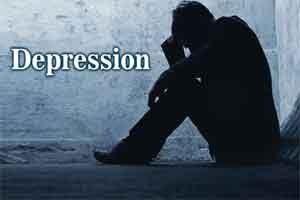- Home
- Editorial
- News
- Practice Guidelines
- Anesthesiology Guidelines
- Cancer Guidelines
- Cardiac Sciences Guidelines
- Critical Care Guidelines
- Dentistry Guidelines
- Dermatology Guidelines
- Diabetes and Endo Guidelines
- Diagnostics Guidelines
- ENT Guidelines
- Featured Practice Guidelines
- Gastroenterology Guidelines
- Geriatrics Guidelines
- Medicine Guidelines
- Nephrology Guidelines
- Neurosciences Guidelines
- Obs and Gynae Guidelines
- Ophthalmology Guidelines
- Orthopaedics Guidelines
- Paediatrics Guidelines
- Psychiatry Guidelines
- Pulmonology Guidelines
- Radiology Guidelines
- Surgery Guidelines
- Urology Guidelines
Depression closely associated with chronic low Back Pain

The presence of depression was significantly associated with low back pain (LBP), especially in severely depressed individuals, reports a study published in the journal Spine.
There is increasing evidence supporting an association between depression and LBP. However, the degree of the association between these two conditions in the general population is poorly understood. Low back pain is caused by injury to a muscle (strain) or ligament (sprain). Common causes include improper lifting, poor posture, lack of regular exercise, a fracture, a ruptured disc or arthritis.
Park and associates conducted a cross-sectional study to analyze the relationship between the presence and severity of depression and low back pain (LBP) in a representative sample of the general population using a self-report screening questionnaire for depression.
The investigators conducted health surveys and examinations on a nationally representative sample (n = 7550) of Koreans. LBP status was determined by a simple survey response concerning LBP >30 days during the past 3 months. Depression was defined as individuals with a total score >10 on the Patient Health Questionnaire (PHQ)-9 survey. The severity of depression was categorized as none (0–4), mild (5–9), moderate (10–14), moderately severe (15–19), and severe (20–27) according to PHQ-9 score.
Read Also:Diabetes drug improves depression in Parkinson’s disease
Key study findings:
- In the Korean population, the prevalence of depression was significantly greater in individuals with LBP (20.3%) than in those without LBP (4.5%).
- On multivariate logistic regression analysis, the presence of depression was significantly associated with LBP.
- The risk of LBP increased with increasing severity of depression as follows: severe depression (aOR: 9.28), moderately severe depression (aOR: 3.24), moderate depression (aOR: 4.97), and mild depression (aOR: 2.48).
Depression is the most common psychiatric disorder reported in most of the community-based studies and is increasing abruptly. It is also reported as one of the most common psychiatric disorder in outpatient clinic population and in subjects seen in various medical and surgical setting.
For reference log on to 10.1097/BRS.0000000000002595

Disclaimer: This site is primarily intended for healthcare professionals. Any content/information on this website does not replace the advice of medical and/or health professionals and should not be construed as medical/diagnostic advice/endorsement or prescription. Use of this site is subject to our terms of use, privacy policy, advertisement policy. © 2020 Minerva Medical Treatment Pvt Ltd